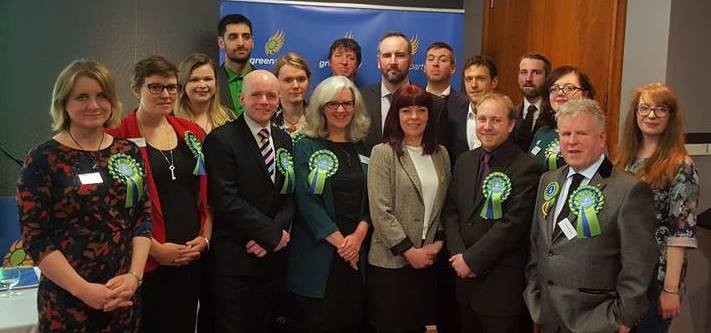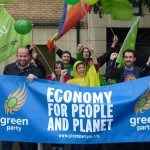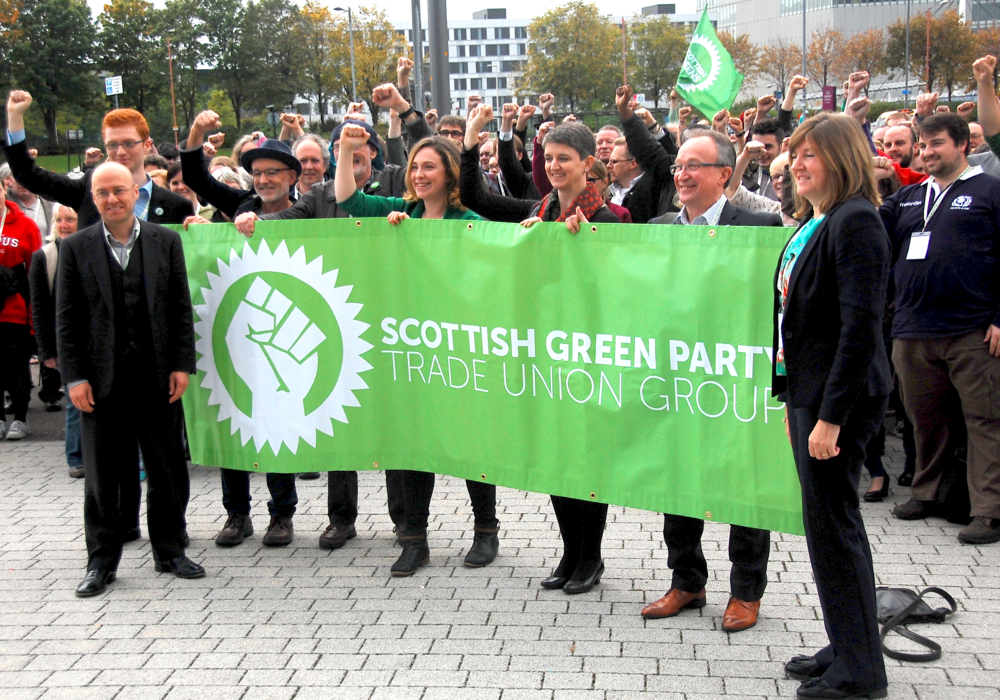The Biggest Progressive Slate in Northern Irish History?

The Green Party in Northern Ireland’s announcement that it will field 18 candidates for this May’s NI Assembly elections – one in every constituency – comes with the historic opportunity for everybody in the region to vote Green. Outside of European elections, this has never happened before, and it heralds a landmark shift in the state of Northern Irish politics as a whole, and the Greens’ position within it.
The anti-sectarian left has never before had a united, province-wide party to unite behind; other parties that could be considered left of centre (Sinn Féin and the SDLP) are marked by the sectarian divides of traditional NI politics, and the non-sectarian Alliance Party are for the most part free-market liberals, sisters of the Liberal Democrats in the rest of the UK.
Historically, the Northern Irish Labour Party took a somewhat cross-community, left-of-centre position, but that party never stood across NI, and collapsed during the Troubles. The modern Labour Party do not stand candidates here.
This leaves the Green Party as the largest fully-fledged progressive party, not defined by a conflicted past, or as Cllr. John Barry puts is, by nationally-aligned “patron states”.
What’s more, the Greens provide a vital avenue for liberation politics in Northern Ireland; an area where other parties have been notably and shamefully stubborn and reticent. Once the party of civil rights, the SDLP have failed to take opportunities to trust women with their own bodies, and along with Alliance, have repeatedly failed to have all their MLAs vote in favour of same-sex marriage (Northern Ireland being the only region in these islands retaining archaic and discriminatory marriage law).
This is coupled with the Green Party’s place as a left-wing, transparent organisation, an area on which Sinn Féin have been criticised for handing welfare reform to a Tory Westminster government in the “Fresh Start” agreement of December 2015.
In this context, the importance of the Green Party running everywhere in Northern Ireland can’t be understated- the state has never seen such a decided, intersectional, anti-sectarian political platform which runs the length and breadth of the six counties. Places like Fermanagh, Tyrone, Mid Ulster and North Antrim have never had the opportunity to vote a Green into the Assembly before; elsewhere, people haven’t had this opportunity since the 2007 elections.
The Greens are set to elect around three MLAs this May, building on the work of Steven Agnew in the last five years. Steven brought, among other things, a moratorium on fracking, the first motion on equal marriage, and a vital Children’s Bill, forcing government departments to work together for children’s services. He was also crucial in exposing the flaws in welfare devolution proposals which would have left the most vulnerable here even worse off. With such an impressive and widely-praised portfolio from one MLA, having more Greens in Stormont would be truly transformative for accessible politics in Northern Ireland.
Along with the likely election of Gerry Carroll in West Belfast, the Assembly that is elected in May is likely to have the most progressive left-wing naughty corner (as the small opposition to NI’s government is called) in our history.
This growth, and this opportunity for everyone, urban and rural, to support us, is a crucial step in LGBT and women’s rights, fair economy, environmental justice and anti-sectarianism, all of which are badly needed. The combination of these elements is one that only the Greens provide, and historically, this May, we’re building that movement by providing the option for everybody, from Fermanagh to Foyle, North Antrim to South Down, to make history, and vote Green.
If you live in Northern Ireland and are not yet registered to vote in May’s election, you have until mid-April to do so. Details of how to register can be found here.



Leave a Reply